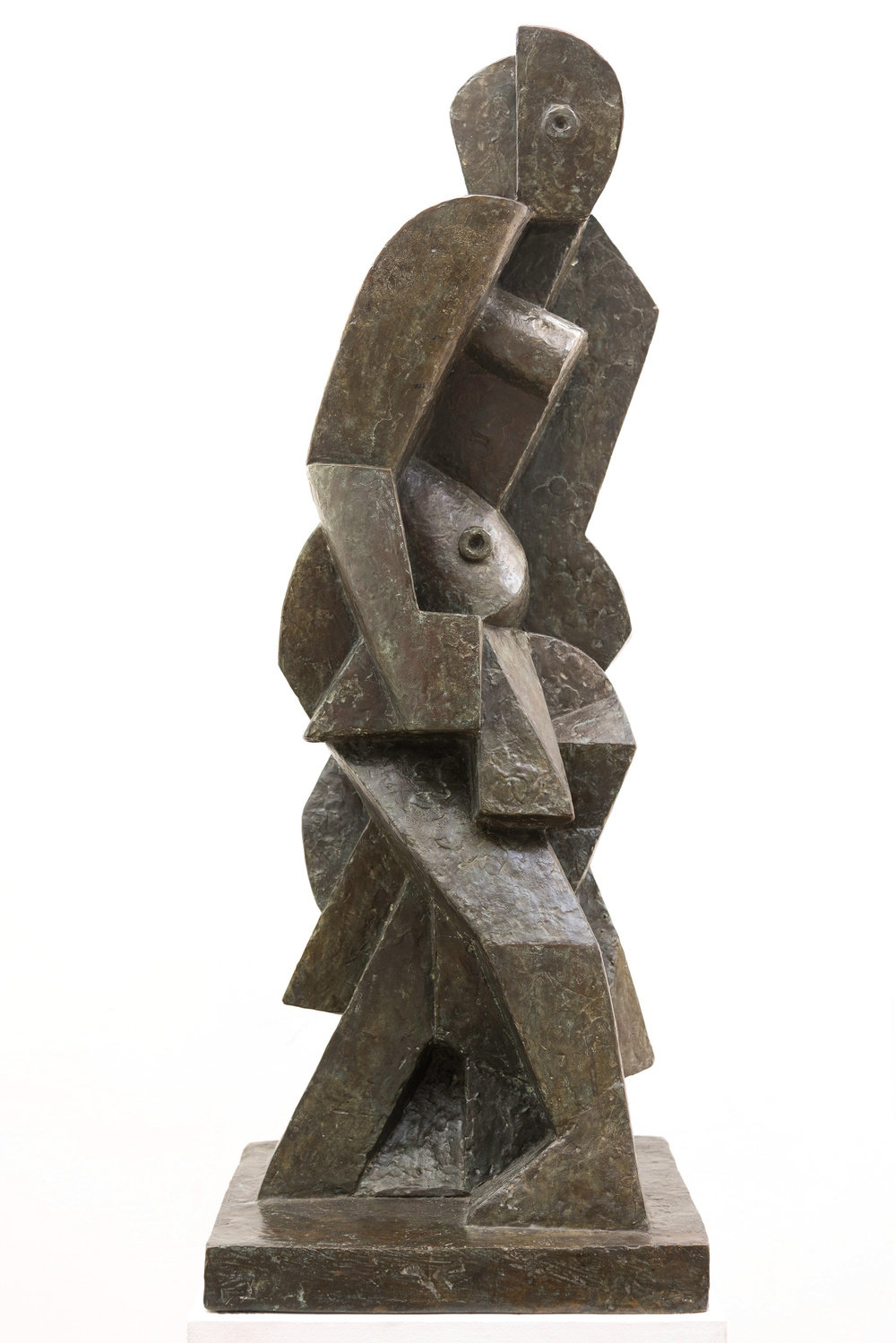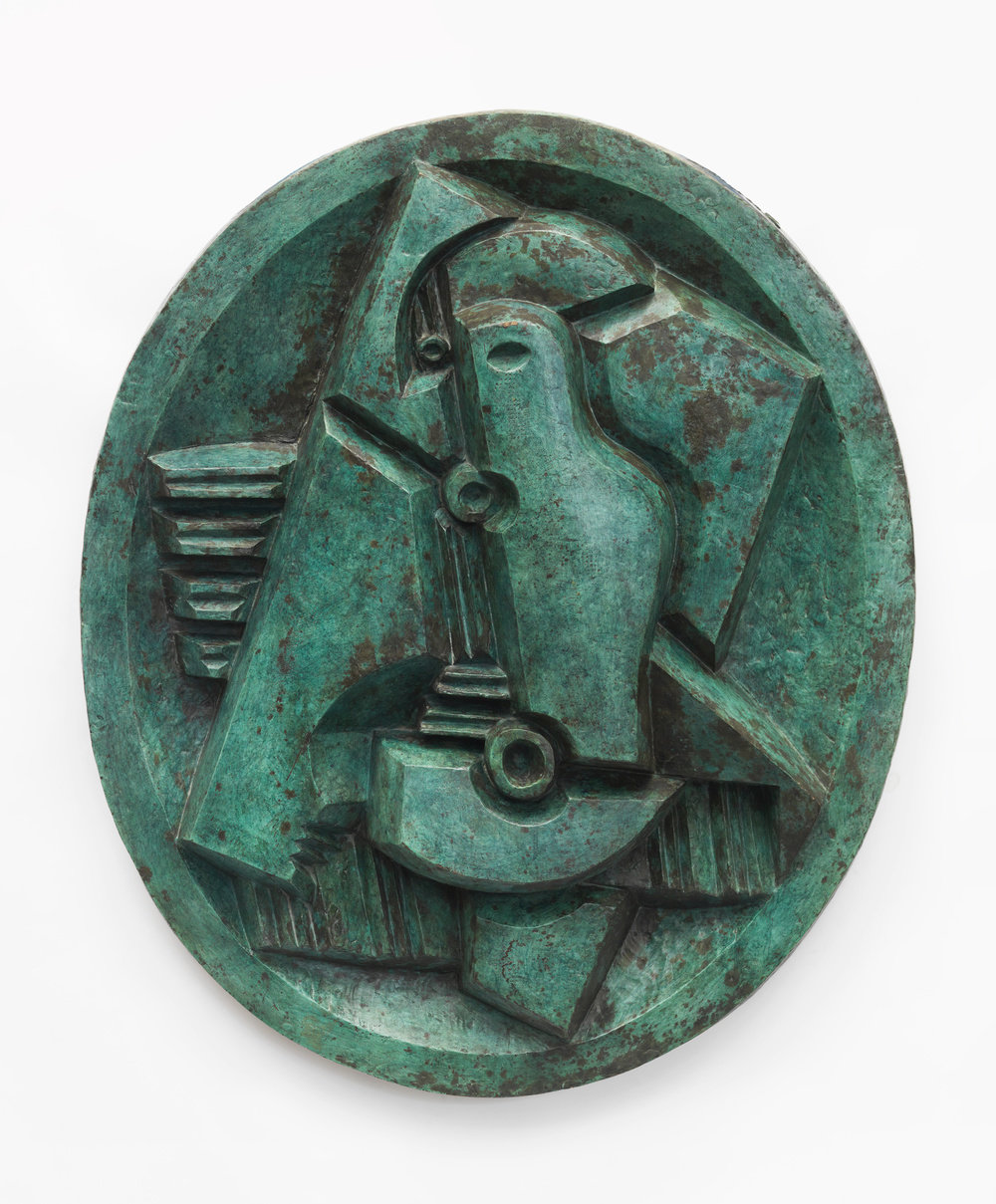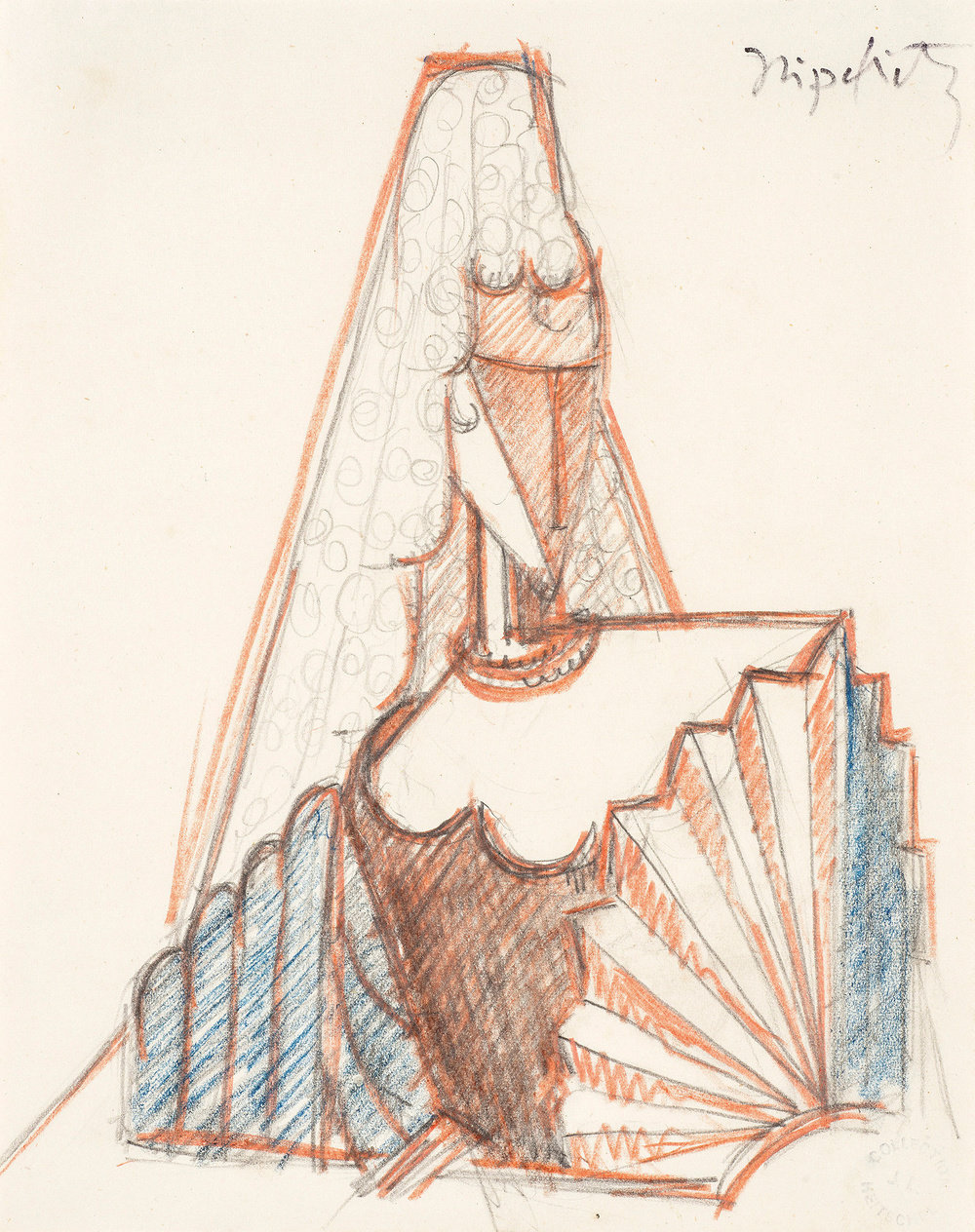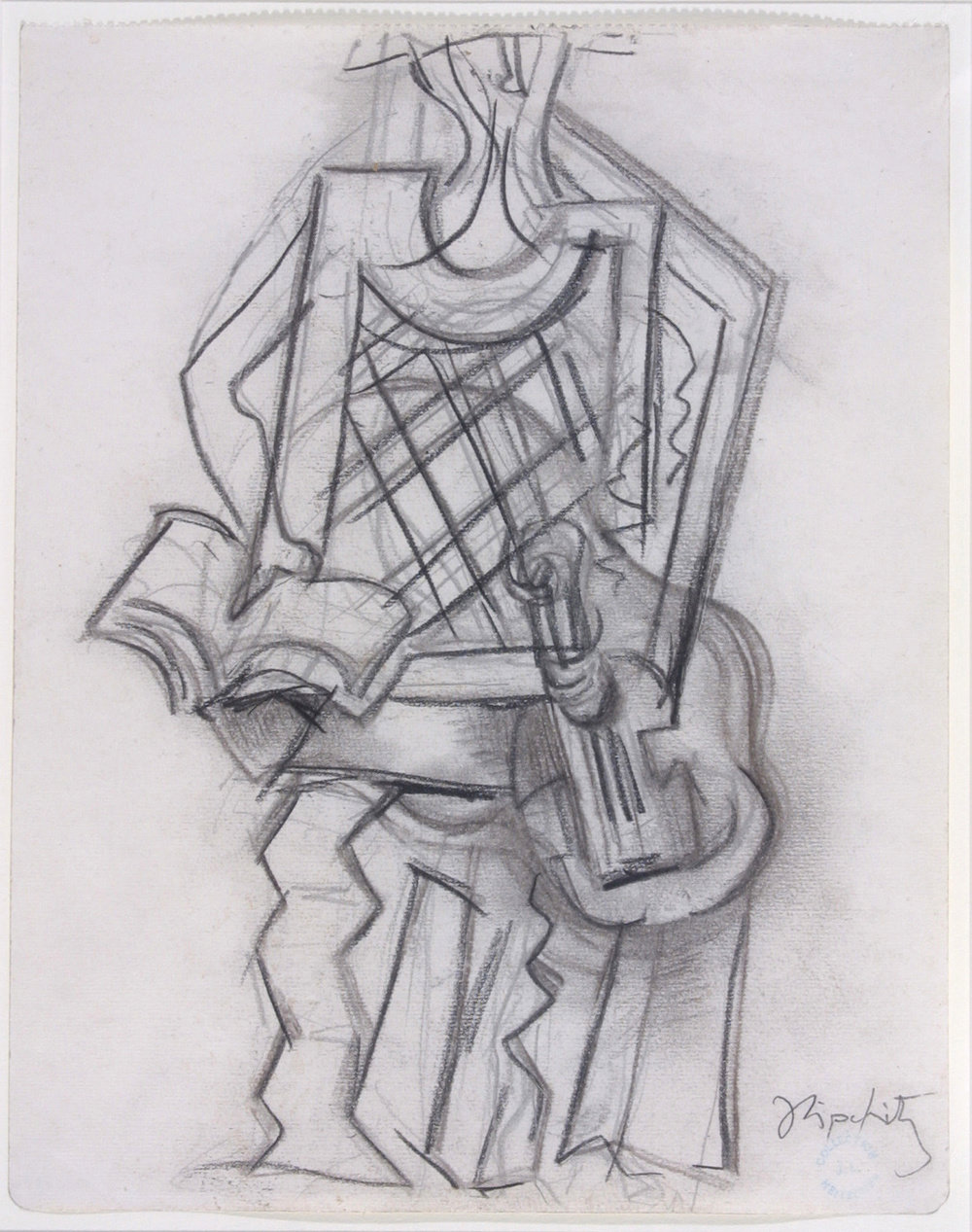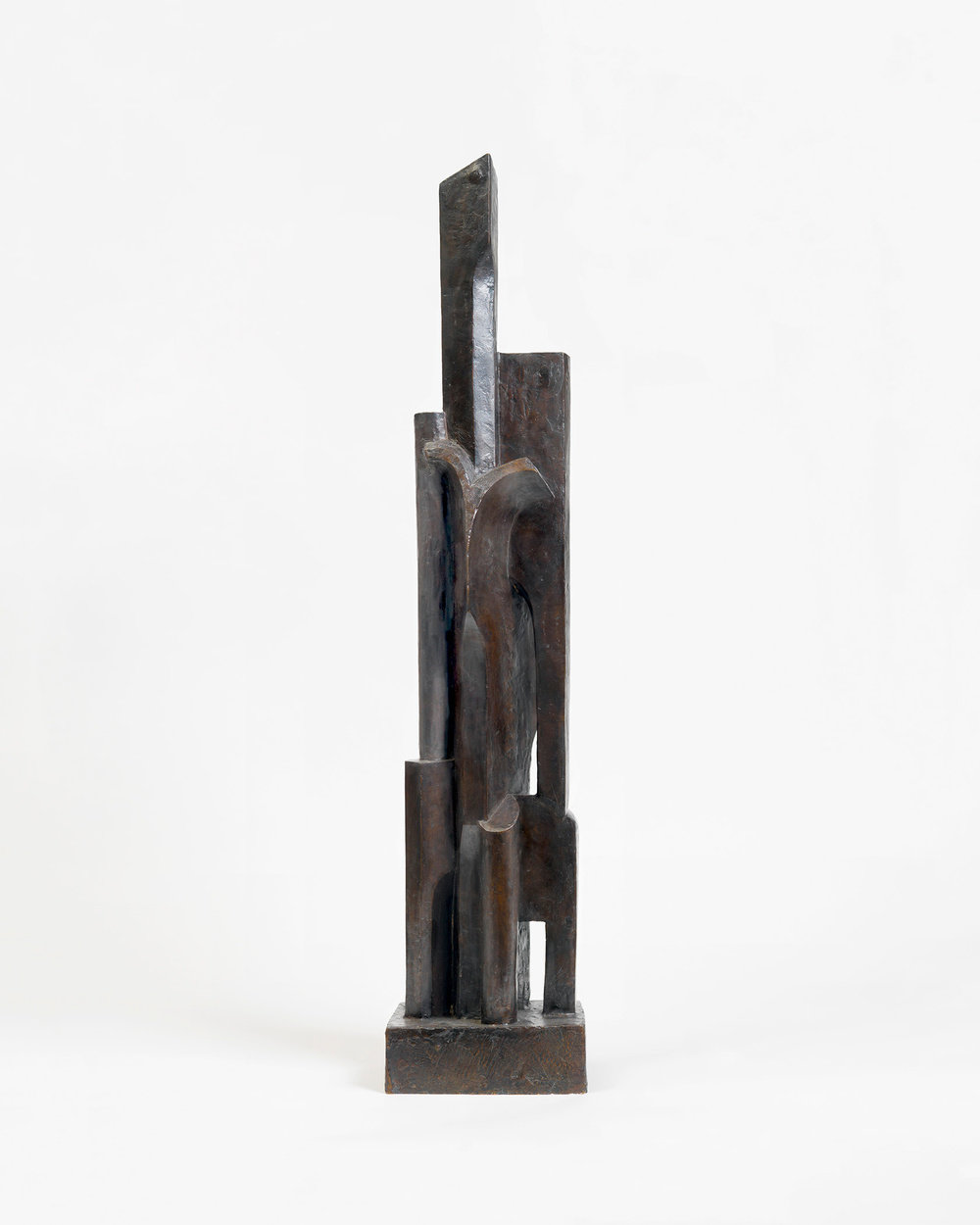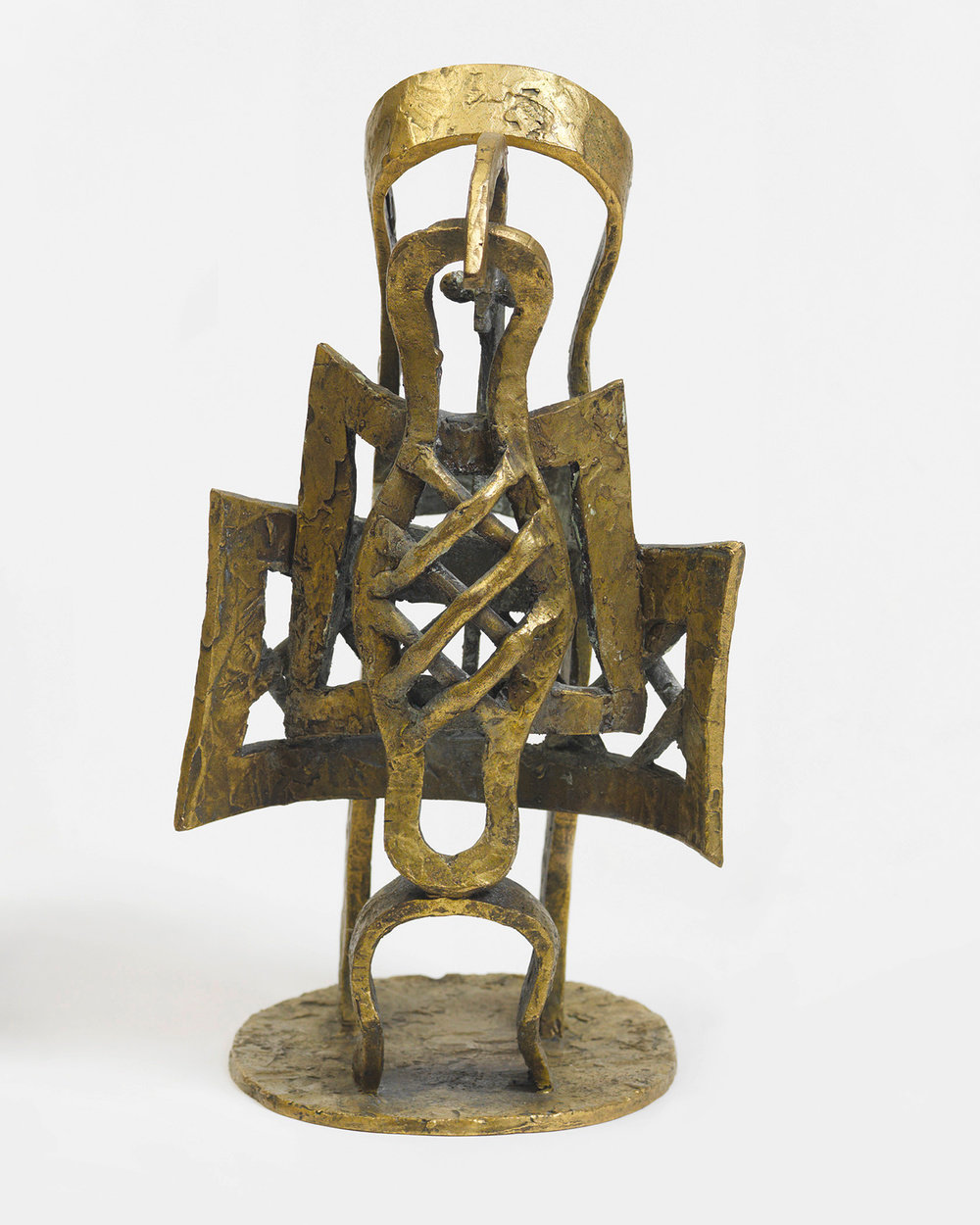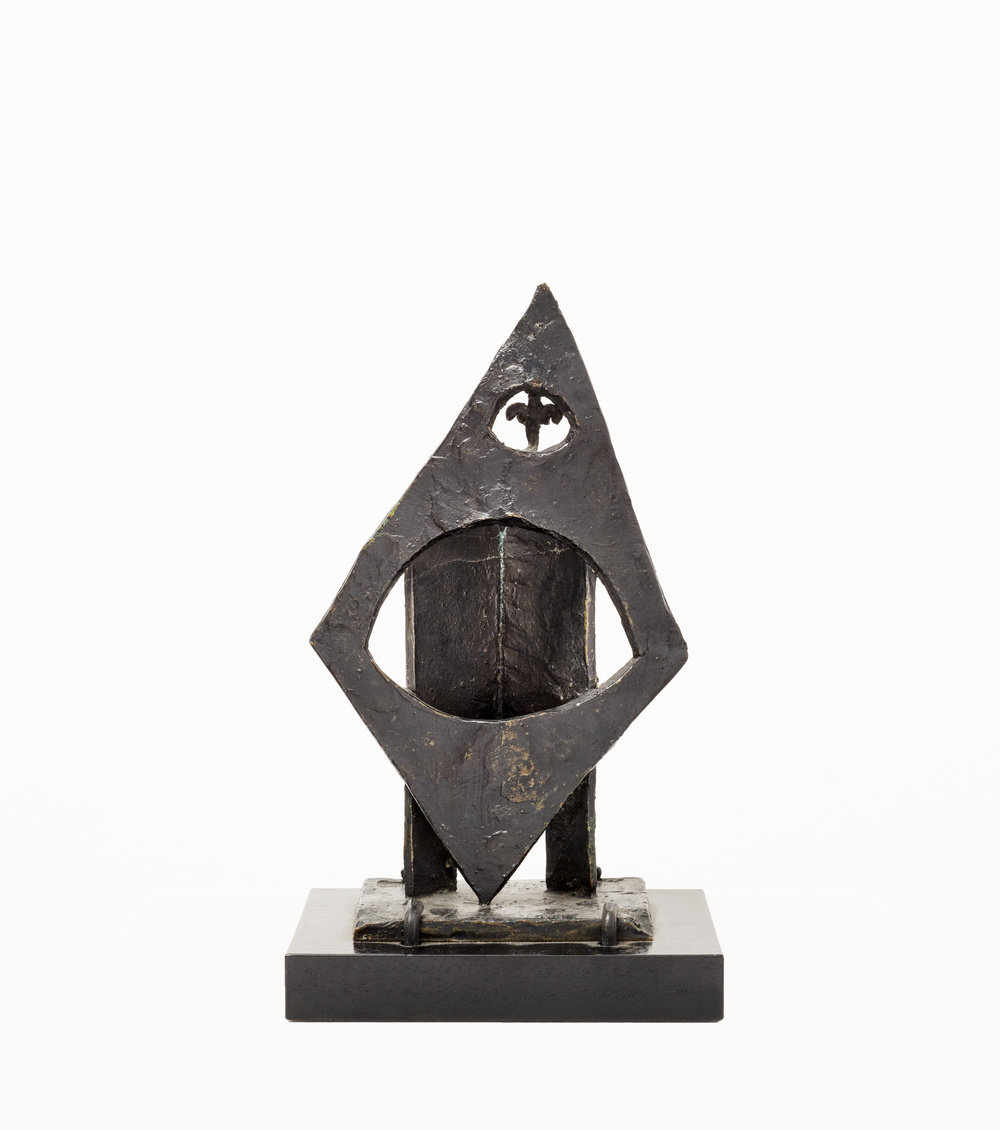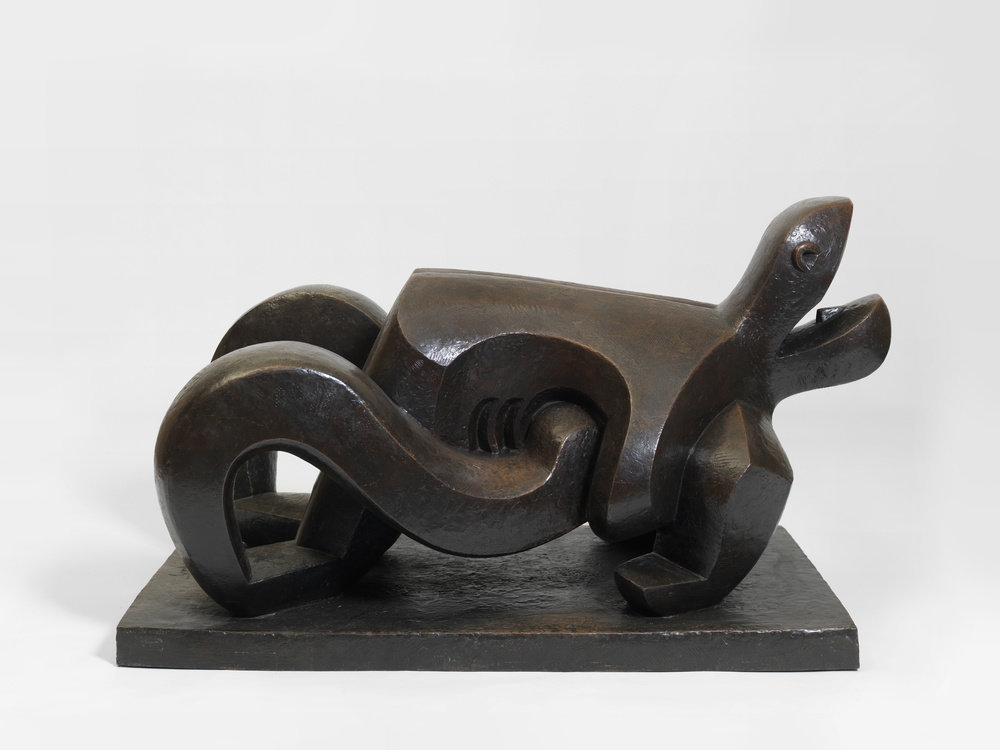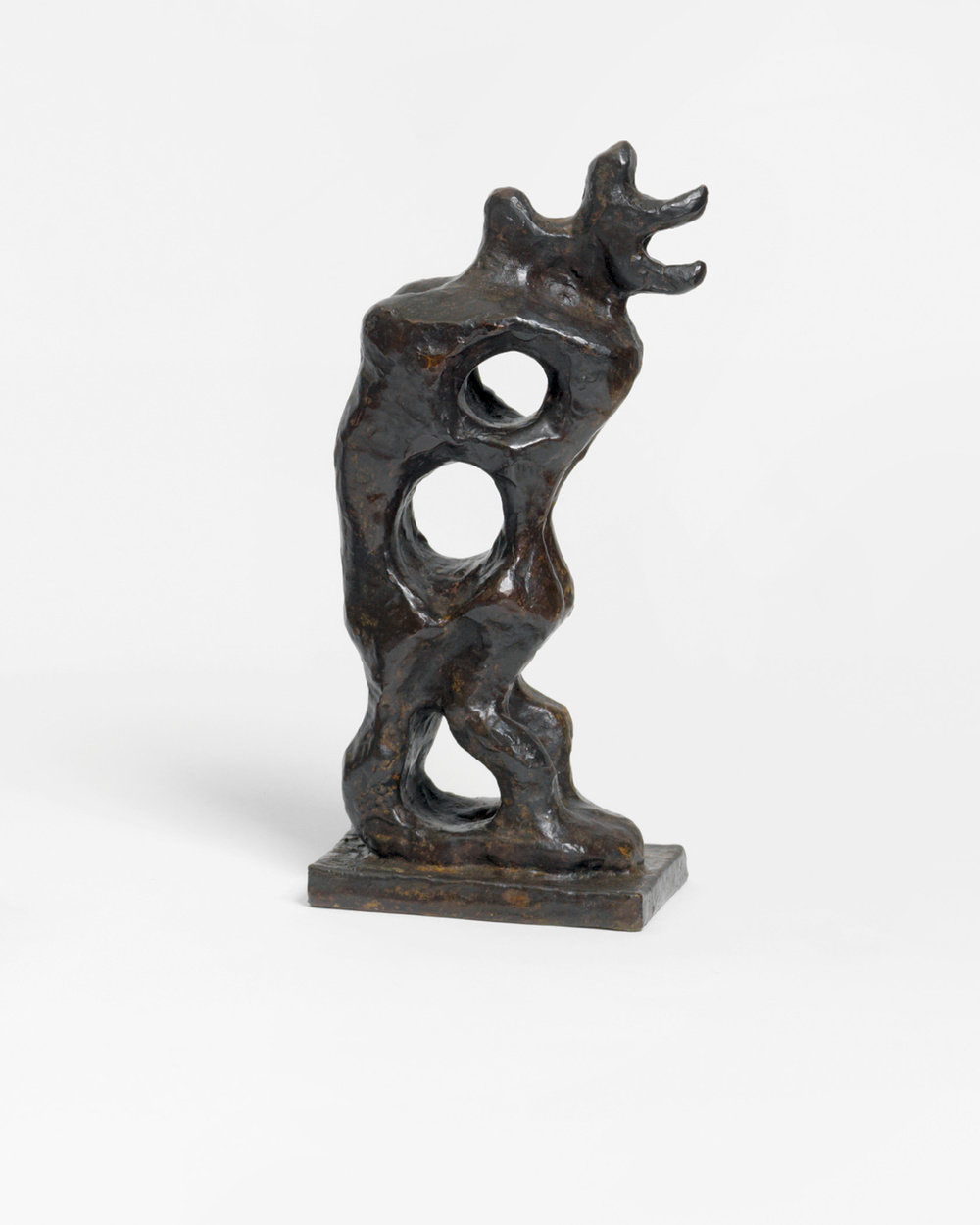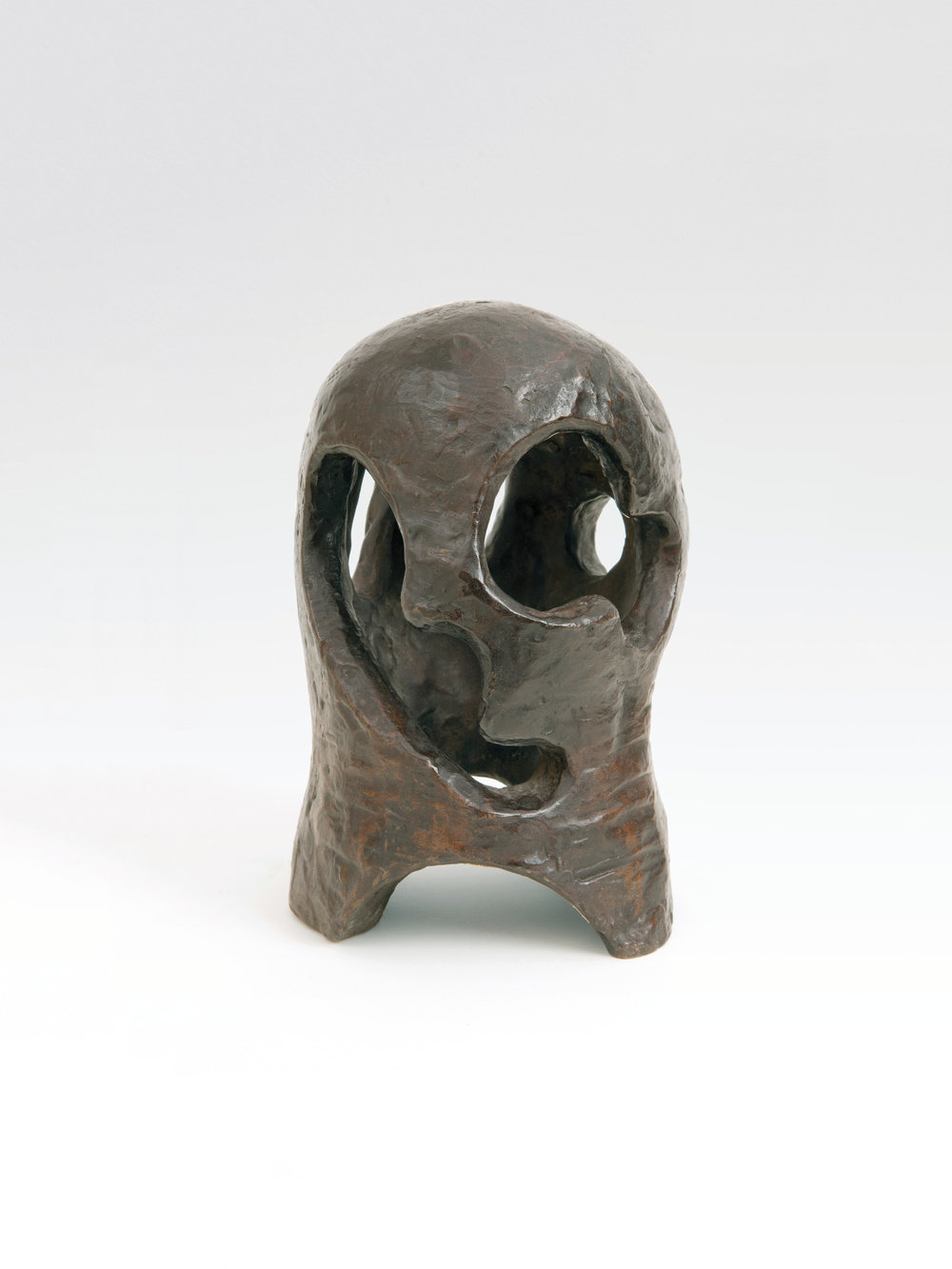The Directors of Marlborough Gallery are pleased to announce Jacques Lipchitz, The Paris Years: Sculpture and Drawings from 1911-1932, a presentation of the 20th Century master’s seminal artworks which will open on October 17th and remain on view through November 23rd. The exhibition, which includes some 50 works, takes as its focus crucial years of innovation in the artist’s early artistic life. Sculptures as well as a selection of drawings and bas reliefs from the period are featured. An illustrated catalog with a new essay by curator and scholar Kosme de Barañano will be available.
Born in Lithuania in 1891, Lipchitz arrived in Paris in 1909 to begin working as a sculptor and quickly became acquainted with key members of the avant-garde. His early works, in stone and later often in bronze, realized the potential of Cubism as a sculptural form. Highlights of the exhibition include several key works created during the subsequent years, including Bather III, from 1917, a rhythmic, multi-faceted female figure conceived in Cubist planes, Sculpture (1915) a work that Lipchitz considered his attempt to “make an art as pure as crystal.”
Beginning in 1918, Lipchitz created bas-reliefs that depicted still lifes of objects such as a wine bottle, fruit basket and most frequently, musical instruments. Often placed in a deeply cut oval, curvilinear shapes and planes in high relief emphasized the contrasts of light and shadow and thus the three-dimensional sculptural effect. In 1922, Albert Barnes, an enthusiastic early collector of the artist’s work, commissioned Lipchitz to create five of these bas-relief works for his museum, The Barnes Foundation. In 1925 Lipchitz began creating his celebrated “Transparents,” which displayed three-dimensionality in an ambiguous and flattened way, with planes superimposed upon each other as if in interplay of amorphous densities. He went on to create “open” sculptures, such as Man Leaning on Elbows (1925), the Head of a Woman (1930) and Meditation (1931) that utilize negative space to shape the works, with the volume of the figures being created by the openness and the voids between the planes. All of these innovative works broke with traditional notions of the interrelation of space and emptiness.
In addition to being one of the 20th Century’s most influential sculptors, his importance as a draftsman is brought forth in the exhibition. The artist’s virtuosity in handling works on paper in a variety of mediums—pencil, ink, watercolor, Gouache, paste and charcoal—reveals the range and increasing importance of drawing within his early stylistic and conceptual development. Shortly after fleeing Paris for New York in 1941, he began to show in galleries and museums until his death in 1973. His first exhibition with Marlborough Gallery was in 1966.
Jacques Lipchitz has been included in group and solo exhibitions at the Museum of Modern Art, New York; Neue Nationalgalerie, Berlin; The Musée National d’art Modern, Paris, France; Institut Valencià d’Art Modern, Valencia, Spain, among many others. In 2018-2019 a major retrospective was presented in Russia at The Moscow Museum of Art.
Public installations of sculptures have included the monumental Peace on Earth (1969) at The Music Center Plaza in Los Angeles in front of The Mark Taper Forum, Prometheus Strangling the Vulture, the plaster version of which was first exhibited at The World’s Fair in Paris in 1937 at the same time as Picasso’s Guernica, and the bronze cast is now owned by The Philadelphia Museum of Art, as well as Government of the People (1976) commissioned by the city of Philadelphia. In 1964, Columbia Law School commissioned his monumental Bellerophon Taming Pegasus, and at the time of installation it was the second-largest metal sculpture in New York City, after the Statue of Liberty.
Artwork by Lipchitz is in innumerable museums worldwide, including Centre Pompidou, Paris, France; Centro Museo de Arte Reina Sofía, Madrid, Spain;, New York; Israel Museum, Jerusalem, Israel; The National Gallery of Art, Washington, D.C., ; Art Institute of Chicago, Chicago Illinois; Tate Britain, London, England; Sprengel Museum, Hannover, Germany; Stedelijk Museum, Amsterdam, Netherlands; The State Hermitage Museum, St. Petersburg, Russia; and The Metropolitan Museum of Art, The Museum of Modern Art and The Whitney Museum of American Art, New York.
For press inquiries please contact
info@marlboroughgallery.com
Works
